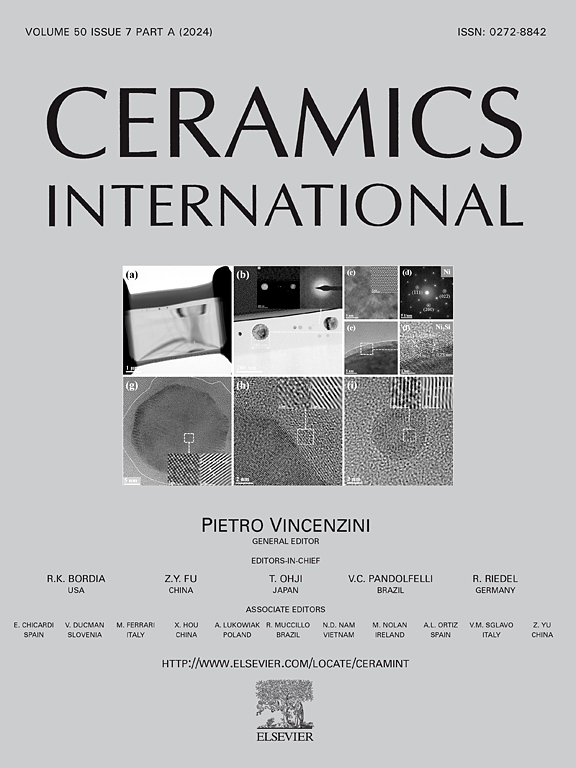Interaction of phenolic compounds with functionalized TiO2: Enhanced catechol adsorption and cooperative phenol adsorption
IF 5.1
2区 材料科学
Q1 MATERIALS SCIENCE, CERAMICS
引用次数: 0
Abstract
A commercial TiO2 sample functionalized with 3-aminopropyltrimethoxysilane (APTMS) and 4-carboxyphenylboronic acid (CPBA), has been previously proposed as a suitable photocatalyst to perform selective photocatalytic degradation of pollutants in aqueous streams, while avoiding the oxidation of valuable catechol simultaneously present in the reacting medium. In the present study, we highlight the adsorption mechanisms underlying the higher affinity of catechol, compared to phenol, with the surface of modified TiO2, quantitatively justifying the photocatalytic selective degradation results previously obtained. Moreover, a cooperative adsorption mechanism of phenol onto the TiO2 sample modified with APTMS has been for the first time observed. The resulting sigmoidal adsorption isotherms, satisfactorily fitted with the Hill model, could be attributed to the enhanced surface hydrophobicity and, more importantly, to alterations of the folding of APTMS molecules on the TiO2 surface occurring upon increasing the concentration of the phenolic compounds.
Photocatalytic tests revealed that the existence of boronate groups on the surface of TiO2 hinders the photocatalytic degradation of catechol and facilitates a swifter oxidation of phenol. These findings confirm the potential for selective photocatalytic degradation, in line with modern conceptions of innovative and environmentally sustainable wastewater treatments.

求助全文
约1分钟内获得全文
求助全文
来源期刊

Ceramics International
工程技术-材料科学:硅酸盐
CiteScore
9.40
自引率
15.40%
发文量
4558
审稿时长
25 days
期刊介绍:
Ceramics International covers the science of advanced ceramic materials. The journal encourages contributions that demonstrate how an understanding of the basic chemical and physical phenomena may direct materials design and stimulate ideas for new or improved processing techniques, in order to obtain materials with desired structural features and properties.
Ceramics International covers oxide and non-oxide ceramics, functional glasses, glass ceramics, amorphous inorganic non-metallic materials (and their combinations with metal and organic materials), in the form of particulates, dense or porous bodies, thin/thick films and laminated, graded and composite structures. Process related topics such as ceramic-ceramic joints or joining ceramics with dissimilar materials, as well as surface finishing and conditioning are also covered. Besides traditional processing techniques, manufacturing routes of interest include innovative procedures benefiting from externally applied stresses, electromagnetic fields and energetic beams, as well as top-down and self-assembly nanotechnology approaches. In addition, the journal welcomes submissions on bio-inspired and bio-enabled materials designs, experimentally validated multi scale modelling and simulation for materials design, and the use of the most advanced chemical and physical characterization techniques of structure, properties and behaviour.
Technologically relevant low-dimensional systems are a particular focus of Ceramics International. These include 0, 1 and 2-D nanomaterials (also covering CNTs, graphene and related materials, and diamond-like carbons), their nanocomposites, as well as nano-hybrids and hierarchical multifunctional nanostructures that might integrate molecular, biological and electronic components.
 求助内容:
求助内容: 应助结果提醒方式:
应助结果提醒方式:


